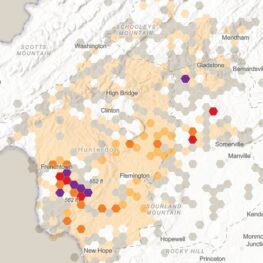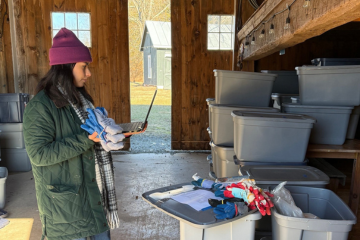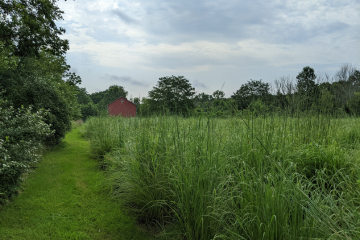 What’s in your drinking water? The nonprofit Raritan Headwaters Association (RHA) is making it easier to find out!
What’s in your drinking water? The nonprofit Raritan Headwaters Association (RHA) is making it easier to find out!
Four out of five households – 80 percent – in the upper Raritan River watershed in Hunterdon, Somerset, and Morris counties get drinking water from a private well on their property. The only way for well owners to know if their water is safe and healthy is by testing it.
Since 1974, Raritan Headwaters Association has offered well testing at discounted rates through a certified laboratory. But it’s up to homeowners to choose exactly which substances to test for – which can be confusing without knowledge of potential risks.
RHA has just published interactive maps of water quality data collected from wells throughout the watershed, serving as a useful tool for residents considering testing options. By exploring test results in their immediate vicinity, residents are empowered to make more informed decisions around monitoring the health of their drinking water.
“Our goal is to educate residents about common well water pollutants and make testing easy so that everyone in our watershed has access to safe drinking water,” said RHA Well Testing Manager Mara Tippett.
The data generated through RHA’s Community Well Test program are used to assess the quality of the water from residential wells throughout the watershed. “We took 10 years of test results – from 2011 through 2020 – and mapped all the data points,” Tippett explained. “Using our new maps, local residents can see what contaminants are most common in their neighborhoods, learn about sources and prevention, and get guidance on testing frequency.”
Common well water contaminants include coliform bacteria, nitrates, arsenic, gross alpha (naturally-occurring uranium and radium), radon, and volatile organic compounds. Lead is another potential drinking water contaminant in homes built before 1986, where it can lurk in pipes, solder or plumbing fixtures.
The new RHA maps divide the 470-square-mile watershed into a grid of one-square-mile areas. Each hexagon-shaped cell is color-coded to show what level of contamination was detected in well tests. A separate map was created for each common contaminant.
“It’s easy for people to zoom into their towns and neighborhoods and see what a decade’s worth of well test results have found,” said Melissa Thomas, RHA’s Director of GIS (Geographic Information Systems) mapping. “For example, if the map shows that wells within a mile of your home have high levels of arsenic or volatile organic compounds, you’ll probably also want to test for those.”
The grid mapping system was chosen, Thomas noted, to protect the privacy of homeowners who have had their wells tested through RHA. Exact locations of wells that have been tested are not shown.
How to Get Your Well Tested
To test your well, you may participate in an upcoming Community Well Testing event, in which local municipalities offer convenient pick-up and drop-off points for testing kits; or order a water sampling kit online for pick-up at Raritan Headwaters offices in Bedminster or Flemington. Following the instructions on the kits, collect samples of your tap water and bring the samples back to RHA.
Test results will be emailed to you in about two weeks. If contamination is found, RHA’s well testing department can provide resources on water treatment options, such as filter systems for the home.
“Approximately 1,600 local households utilize our Well Test program each year to determine their drinking water quality,” said Tippett. “Testing every year is vital to ensuring a safe and secure water supply because conditions can change over time. Changes in water quality and potability may occur due to extreme weather events, structural condition of the well, or impact from nearby septic systems.”
For more information on well testing, go to www.raritanheadwaters.org/get-involved-2/groundwater-well-testing/ or email WellTesting@raritanheadwaters.org.
To find an upcoming Community Well Testing event happening near you, go to www.testmywell.org.



